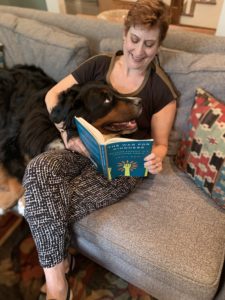 The War for Kindness: Building Empathy in a Fractured World was initially an unusual, yet ultimately an ideal, choice for my College of Charleston book circle this spring semester.
The War for Kindness: Building Empathy in a Fractured World was initially an unusual, yet ultimately an ideal, choice for my College of Charleston book circle this spring semester.
The seven students – all seniors except for one junior – who read this ground-breaking book by Stanford Psychology Professor Dr. Jamil Zaki immersed themselves with me in a highly relevant topic. Empathy continues to attract growing interest from the public, especially during our unprecedented global covid-19 pandemic.
In our weekly meetups, which I facilitated as the group’s mentor, we explored what empathy is (a skill not a trait), how to use it, and how others respond to it. We also reviewed the six common misconceptions about empathy, some of which may be tied to the erosion of empathy – at least before covid-19.
As part of an organizational behavior and change class, our conversations were hardly theoretical; we were also feeling more empathy toward each other.
Our book circle members, as well as the other students in the class, quickly had to adjust to new ways of working, starting after our first in-person meeting. And as I quickly realized, the students were facing other seismic changes too.
Immediately after spring break, the College shifted to online classes and required students to vacate their dorms. Starting with our second book circle meeting, we conducted all our remaining meetings via Zoom.
We were definitely practicing social distancing for our discussions as we sheltered in place from our from our apartments and homes in the South, Mid-Atlantic, New York City and New England. Yet just as importantly, we also did “distant socializing,” as Jamil calls it, to strengthen the connections among us.
Distant socializing — trying to feel together while we were physically apart – was valuable for us on several levels. We personally experienced the multiple ways individuals empathetically respond to one another – sharing what we were experiencing, caring about each other, and thinking about each member’s perspective. And doing it all through technology, which pre-covid-19 was often viewed as an “empathy killer.”
Now technology held us together as the book circle members talked about what was happening in their lives as well as what they were reading in the book. Their senior year of college had just turned upside down.
Only a few weeks earlier, the students had been eagerly anticipating a festive graduation ceremony on campus for the College’s 250th anniversary. They were looking forward to introducing their friends to their family who’d be traveling to Charleston. Several also were planning post-graduation trips before weighing job opportunities and offers in a strong economy. In just a few weeks though, an invisible virus had uprooted all of plans.
Since the students shared these common experiences, they were able to respond to each other empathetically, vicariously taking on each other’s emotions. This experience sharing is the foundation of empathy science, according to Jamil.
These young adults – ranging in age from 20 to 21 – were also feeling a deep sense of loss. The shifts were so expansive that it was hard for me to imagine all the implications, much less adequately put myself in their shoes. (By the way, this remains one of the traditional ways to describe an aspect of empathy.)
Yet, I could express “empathetic concern.” This is the desire to help the students improve their well-being as they navigated their new situation, ideally becoming more mindful and open to new opportunities. As Jamil writes, this is the aspect of empathy that ignites kind actions.
As we talked about the book’s chapter on “Caring Too Much,” we all started to feel empathetic concerns about the everyday challenges that many health care workers face while interacting with patients and their families. Several students observed that this was the first time they had thought about these on-the-job ordeals.
And now in this pandemic, these challenges have soared, especially in New York City and other locations not just for health care workers, but also for first responders and other essential workers.
We challenged ourselves to take the perspective of health care workers. For example, how were they dealing with their fears about getting enough personal protective equipment (PPE) so they could stay safe and healthy while serving an overwhelming number of new patients. How were they guarding against potentially spreading the virus to their family members? And can these workers even sustain their energy during their workday? Or are they always running at a deficit?
Asking these and other questions helped us deepen our discussions of this research-based book. That helped us build our capacity to be more empathetic – a helpful skill to draw on professionally and personally these days.
Back in December when I chose The War for Kindness for this organizational behavior and change class, I was taking a chance. This book was an outlier compared with those I’ve selected to read in prior semesters for this class. The other books, and certainly the books the other three mentors picked, related more directly to organizational effectiveness, development, or change.
Yet, in the spring of 2020 the research-based The War for Kindness became remarkably relevant, which the students said they appreciated.
And as business pundits are now noting, many leaders are dealing with covid-19 with a new focus and appreciation on empathy and compassion.
Let’s keep building these empathy muscles. We all need more empathy.

0 Comments